Check out our product sheet for the J1 and J2 cells!
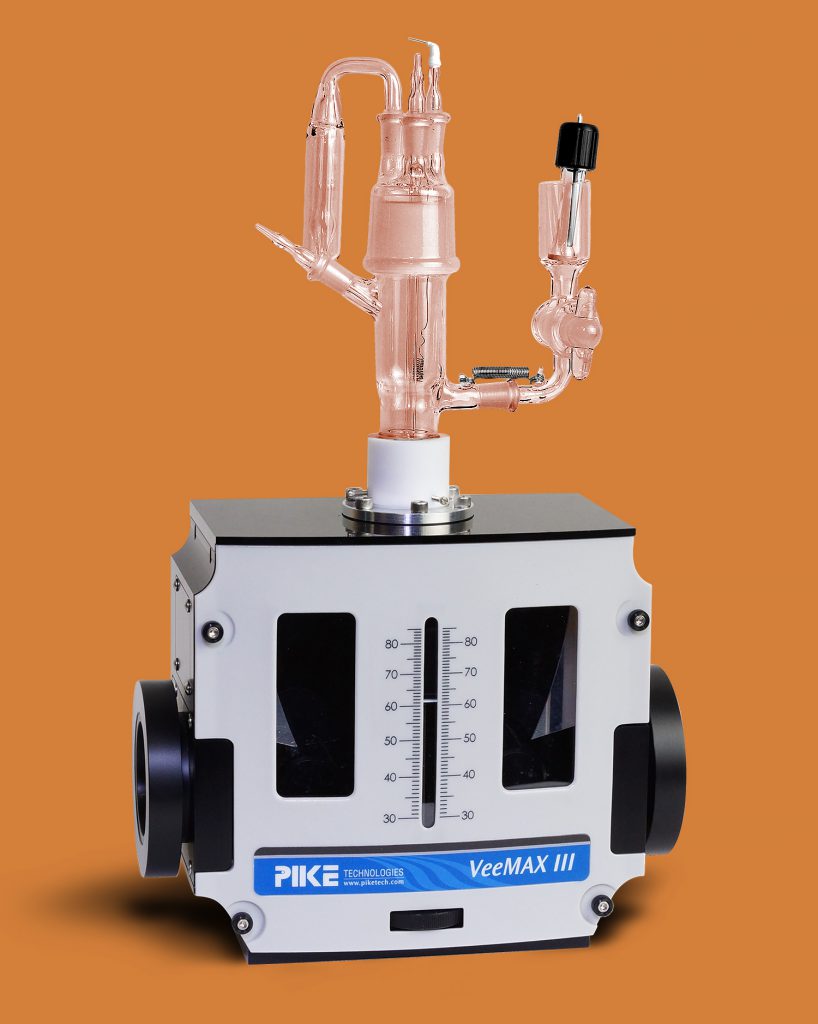
The J1 Spectroelectrochemical Cell
The J1 is a complete three-electrode electrochemical cell purpose-built for ATR-SEIRAS, shown here on the variable angle PIKE VeeMAX III ATR accessory.
The polymer (PTFE or PEEK) and glass construction ensures unbeatable chemical stability under intense experimental and cleaning conditions. Recessed spring-loaded pins make robust, reliable contact with the gold-coated crystal surface.
The supplied glass bubblers and gas trap allow the solution to be sparged with inert gas. Chloride migration from the reference electrode is mitigated by a ground glass stopcock and frit.
The J1 includes:
- glass cell body with choice of PEEK or PTFE polymer components
- PEEK holder for ATR crystal
- glass bubblers and gas trap for solution sparging
- counter and reference electrode
- hardware and spring-loaded pins
The J2 spectroelectrochemical cell
The J2 cell is a simplified version of our flagship J1 cell which offers a standard 3-electrode configuration without the bulky reference arm. It is more suitable for organic electrolytes and for air-sensitive chemistry than the J1, but the J2 can of course also be used with standard aqueous electrolytes. To learn more about the main differences between the J1 and the J2, check out our quick guide.
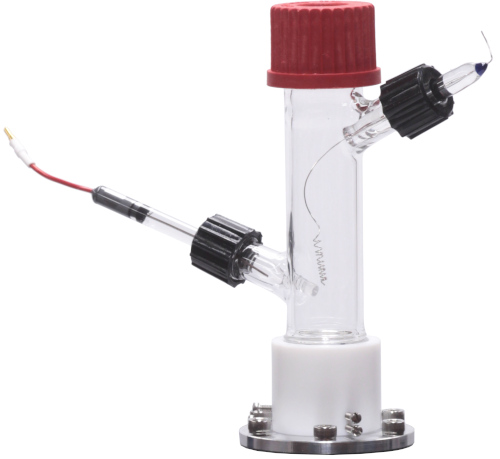
Two Different Crystal Options
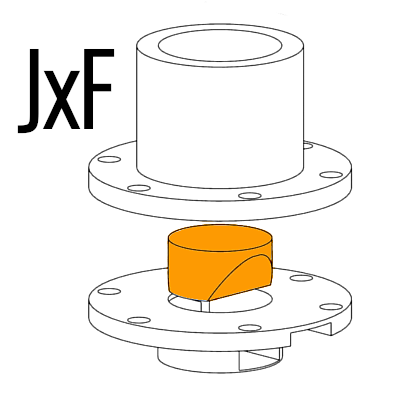
JxF Face-angled crystal cell
By using an anti-reflective coating, the PIKE Face-Angled Crystal (FAC) offers higher spectral throughput and increased signal to noise compared to uncoated optics. SEIRAS signals are up to twice as strong using the FAC compared to a conventional hemisphere. However, strongly absorbing Si phonon modes impose a low-wavelength cutoff around 1250 cm-1.
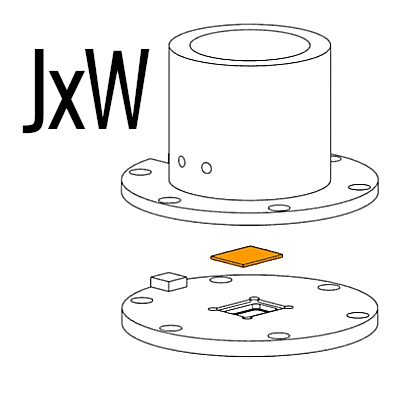
JxW ATR wafer cell
The JxW cell base accommodates 500 μm thick microgrooved ATR wafers, an inexpensive alternative to larger ATR crystals. The underside of the crystal is patterned with microprisms to enable excellent optical coupling. The low pathlength minimizes throughput loss from Si phonon modes, allowing access to the complete mid-IR spectral range from 5000 to 400 cm-1. We’ve shown that these are an excellent substrate for electrochemical ATR-SEIRAS.
Two Different Material Options
Jackfish spectroelectrochemical cells are available in two different materials for the cell base: PTFE (polytetrafluoroethylene; a.k.a. Teflon®) and PEEK (polyether ether ketone).
PTFE (a.k.a Teflon®)
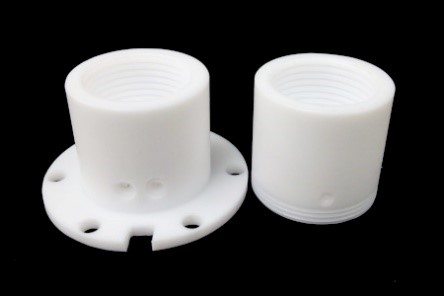
PEEK

Chemical Robustness
- PTFE – The gold standard in chemical inertness and resistance.
- PEEK – Highly chemically resistant, but lower resistance than PTFE. Incompatible with concentrated nitric and sulfuric acids.
Mechanical Strength
- PTFE – Special care must be taken to avoid damaging the threads of the finely tapped holes for contact screws.
- PEEK – More mechanically robust. The threads are less likely to be damaged by clumsiness during assembly.
Rigidity
- PTFE – Soft material which may deform if dropped.
- PEEK – Rigid, non-deformable material.
The price for the two versions is identical. We recommend PEEK, unless your application requires the extra chemical resistance provided by PTFE. This is because extra care must be taken when tightening the contact screws on a PTFE cell base. If the contact screws are over-tightened or cross-threaded, the threads will be destroyed. By selecting a PTFE cell, you are accepting this responsibility.
Since January 2020, all ATR crystal holders compatible with Jackfish cells are manufactured from PEEK. These crystal holders are not a wetted material.
Publications
Hybrid Gold-Conductive Metal Oxide Films for Attenuated Total Reflectance Surface Enchanced Infrared Absorption Spectroscopy. ACS Applied Nano Materials, 2019, 2, 1274-1284.
Electrochemical ATR-SEIRAS Using Low-Cost, Micromachined Si Wafers. Analytical Chemistry, 2017, 89, 11818–11824.
Femtomole Infrared Spectroscopy at the Electrified Metal–Solution Interface. Analytical Chemistry, 2016, 88, 9351–9354.
Surface Enhanced Infrared Studies of 4-Methoxypyridine Adsorption on Gold Film Electrodes. Langmuir, 2016, 32, 2184-2191.
Surface Enhanced Infrared Spectroscopy and Neutron Reflectivity Studies of Ubiquinone in Hybrid Bilayer Membranes under Potential Control. Langmuir, 2016, 32, 2225-2235.
Charge Transfer and SEIRAS Studies of 1,4-Benzoquinone Functionalized Mixed Monothiol/Dithiol Self Assembled Monolayers. Electrochimica Acta, 2011, 56, 4361-4368.
Surface Enhanced Infrared Absorption Spectroscopy Studies of DMAP Adsorption on Gold Surfaces. Langmuir, 2009, 25, 2241-2247
Let’s do science!
Interested? Contact us for more information about our products, including pricing and ordering information.